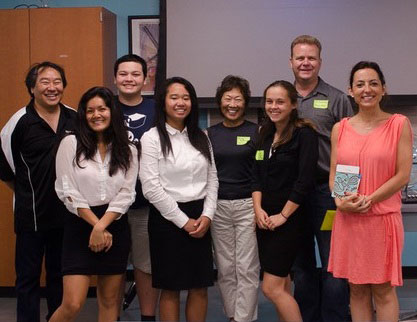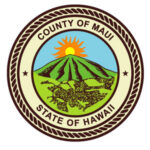 The University of Hawaii (UH) Educational Outreach Team and Maui Economic Development Board have long shared common goals for STEM (science, technology, engineering, and mathematics) education. Recently, the UH-Manoa Physics Department hosted a group of four Maui High School students, Mary Chin, Princess Constantino, Laney Flanagan, and Bryce Jackman, at a Maui workshop to present their summer research findings on the effect of cosmic rays on the earth. With the help of their project mentor Dr. J. D. Armstrong, UH Institute for Astronomy (IfA), and their Maui High science teacher, Keith Imada, the students discussed possible correlations between galactic cosmic rays and solar activity to determine if a connection with global warming exists.
The University of Hawaii (UH) Educational Outreach Team and Maui Economic Development Board have long shared common goals for STEM (science, technology, engineering, and mathematics) education. Recently, the UH-Manoa Physics Department hosted a group of four Maui High School students, Mary Chin, Princess Constantino, Laney Flanagan, and Bryce Jackman, at a Maui workshop to present their summer research findings on the effect of cosmic rays on the earth. With the help of their project mentor Dr. J. D. Armstrong, UH Institute for Astronomy (IfA), and their Maui High science teacher, Keith Imada, the students discussed possible correlations between galactic cosmic rays and solar activity to determine if a connection with global warming exists.
“The abundance of galactic cosmic rays (GCR) hitting our atmosphere is heavily affected by solar activity and its 11-year cycle,” said Dr. Armstrong. “We studied about what cosmic rays are, how the solar activity changed during the last couple of centuries, where radiation comes from, and why radiation protection is necessary.”
The four students each gave a presentation on their research, all relating to climate change on earth. “I discussed how more galactic cosmic rays (GCRs) appear when sunspot numbers are lower, when there is less solar activity,” said Flanagan. “It was so interesting to learn the origin and composition of cosmic rays and solar modulation.” Jackman presented his research about how GCRs do not seem to affect climate change through low cloud coverage. “I learned about the different ways that the GCR flux is measured and about the sun’s 11-year cycle,” he said.
“I loved how we got to use actual data and work through the problems with professors,” said Chin, who investigated the relation among GCRs, the number of sunspots, and global temperatures. Finally, Constantino talked about the relationship between global warming and solar energy reaching the upper atmosphere. The students will also submit their project findings to the 2016 Pacific Science Symposium.
The UH Physics professors gave talks and shared activities using data from an instrument mounted on the International Space Station to teach how protection from galactic cosmic rays is necessary for any NASA Mars mission.
Dr. J. D. Armstrong, Institute for Astronomy Educational Outreach
